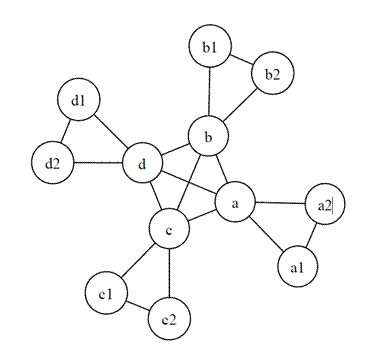New Model Captures Spread of Personal Information through Social Networks
If you ever chat online to friends, colleagues and relatives, you probably have a set of unwritten rules about the kind of information you share with whom. The sort of thing you might take into account is the likelihood that this person will share your information with others, who these other people might be and whether this will be good or bad for you. Above all, you will almost certainly accept that divulging personal details brings you certain benefits, if only that it will strengthen the social bond between you and your correspondent.

But this attitude to sharing personal information is probably in stark contrast to the way you think about the information you share when carrying out an electronic transaction such buying a book or signing up for a newsletter. In this case, most people feel strongly that they should minimise the information they share.
Strangely, most studies of privacy and the spread of personal information through networks have focused on the latter scenario.Today, Jon Kleinberg and Katrina Ligett at Cornell University redress the balance.
These guys have created a model of information sharing that attempts to capture these subtle rules. In the model, two people must agree to share information. The model assumes that they do this strategically to maximize their benefits they receive based on their expectations about what others will do. The model captures the benefit or disadvantage by allowing it take a positive or negative value.
The result is a kind of network formation game, in which players must decide which links to maintain and which to cut so as to maximize their benefits or minimise their losses.
Clearly, this is a game that can produce extremely rich behaviour. Kleinberg and Ligett’s goal is to study the the most basic version of the model that is still rich enough to produce meaningful results.
What they find makes for interesting reading. For example, they say that the model provides an easy way to monitor social welfare, simply by adding up the benefits that everybody gets. They can also look for networks that maximise social welfare.
Kleinberg and Ligett look particularly at stable networks in which people are not forced to make and cut ties since these seem to best represent the ones that humans form naturally. But the new approach allows the researchers to ask an interesting question: are these the best types of network? In other words, are stable networks automatically the socially optimal ones? And if not, what is the difference between them in terms of social welfare?
And that’s just the start of what’s possible. Kleinberg and Ligett have only just begun analysing these networks. The results are at an early stage but the potential is fascinating.
All the more so because of Kleinberg’s background: he has significant form when it comes to analysing networks. In the late 1990s, he developed the hubs and authorities model of websites. His idea was that some websites act as hubs directing surfers to authorities on certain topics and was hugely influential because it lead directly to an objective way of organising and therefore ranking websites . Kleinberg’s work was a direct forerunner of Google’s PageRank.
The question this later paper raises is whether Kleinberg is about trigger the same kind of revolution for social networks that he did for the world wide web. Worth watching.
Ref: arxiv.org/abs/1003.0469: Information-Sharing and Privacy in Social Networks
Keep Reading
Most Popular
Large language models can do jaw-dropping things. But nobody knows exactly why.
And that's a problem. Figuring it out is one of the biggest scientific puzzles of our time and a crucial step towards controlling more powerful future models.
The problem with plug-in hybrids? Their drivers.
Plug-in hybrids are often sold as a transition to EVs, but new data from Europe shows we’re still underestimating the emissions they produce.
Google DeepMind’s new generative model makes Super Mario–like games from scratch
Genie learns how to control games by watching hours and hours of video. It could help train next-gen robots too.
How scientists traced a mysterious covid case back to six toilets
When wastewater surveillance turns into a hunt for a single infected individual, the ethics get tricky.
Stay connected
Get the latest updates from
MIT Technology Review
Discover special offers, top stories, upcoming events, and more.